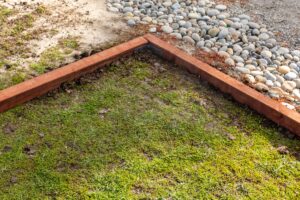Using a Tree Watering Bag: A Simple Solution for Healthy Trees
Planting and maintaining trees requires consistent watering, especially in dry or semi-arid regions where natural rainfall is insufficient. One of the most effective tools for ensuring proper hydration is a tree watering bag. These bags provide a slow, steady release of water, reducing waste and making it easier to care for young and newly planted trees.
In this guide, we’ll explore how tree watering bags work, their benefits, potential drawbacks, and best practices for use. Whether you’re a homeowner, gardener, or landscaper, understanding these simple yet effective devices can help you maintain healthier trees with less effort.
What Is a Tree Watering Bag?
A tree watering bag is a durable plastic or vinyl bag that wraps around a tree trunk or sits at the base of a plant. It holds 15 to 20 gallons of water, which is slowly released through small perforations over a period of several hours. This gradual process allows water to penetrate deep into the soil, reaching the tree’s roots without runoff or evaporation.
There are two main types of tree watering bags:
- Wrap-around bags: These are designed to encircle the trunk of young trees, securing with a zipper or Velcro.
- Donut-shaped bags: Ideal for multi-stemmed shrubs or trees, these sit on the ground around the base of the plant.
Both styles ensure deep, consistent watering, reducing the stress on newly planted trees and preventing under or overwatering.
Tree watering bags are an effective solution for providing consistent hydration to young and newly planted trees. Here’s an overview of their average costs in the U.S. market, purchasing options, and key considerations when buying:
Average Cost of Tree Watering Bags in the U.S. Market
| Brand/Model | Capacity | Price Range |
|---|---|---|
| Treegator® Original Slow Release Bag | 20 gal | $15.95 – $17.95 |
| Treegator® Jr. Pro Slow Release Bag | 15 gal | $17.95 – $20.95 |
| King Innovation Tree Irrigation Bag | 20 gal | $20.00 – $25.00 |
| USHIGHTLIGHT Tree Watering Bag | 20 gal | $25.99 – $29.99 |
| KONIGEEHRE Tree Watering Bag | 20 gal | $22.99 – $26.99 |
Note: Prices are approximate and may vary based on retailers and promotions.
Where to Buy Tree Watering Bags
Tree watering bags are available at various retailers, both online and in-store:
- Online Retailers:
- Amazon: Offers a wide selection of brands and models with customer reviews.
- Forestry Suppliers: Specializes in forestry and landscaping supplies.
- Fast Growing Trees: Provides tree care accessories alongside their plant offerings.
- Home Improvement Stores:
- Home Depot: Stocks brands like King Innovation with in-store pickup options.
- Lowe’s: Offers various tree watering solutions in their garden section.
What to Keep in Mind When Buying a Tree Watering Bag
When selecting a tree watering bag, consider the following factors:
- Capacity: Ensure the bag holds sufficient water for your tree’s size. Larger capacities reduce the frequency of refilling.
- Durability: Look for bags made from heavy-duty, UV-resistant materials to withstand outdoor conditions.
- Ease of Use: Choose designs that are easy to install, fill, and maintain. Features like sturdy handles can enhance usability.
- Compatibility: Some bags are designed for specific tree sizes or types (e.g., single trunk vs. multi-stemmed). Ensure the bag suits your tree’s structure.
- Water Release Rate: Opt for bags with appropriate drip times to ensure deep soil penetration without overwatering.
- Customer Reviews: Reading user feedback can provide insights into the bag’s performance and longevity.
By considering these factors, you can select a tree watering bag that effectively meets your tree’s hydration needs, promoting healthy growth and establishment.
How Does a Tree Watering Bag Work?
The slow-release watering system of a tree watering bag is what makes it so effective. Here’s how it works:
- Filling the bag: Attach the bag around the tree trunk or place it at the base, ensuring it sits flat. Fill it with water using a hose or bucket.
- Gradual water release: Small perforations at the bottom of the bag allow water to seep out slowly over 5 to 9 hours. This prevents water runoff and ensures deep soil penetration.
- Encouraging deep root growth: Unlike traditional watering methods that only moisten the surface, the slow drip encourages tree roots to grow deeper into the soil, making the tree stronger and more drought-resistant.
For best results, water your tree once or twice per week, adjusting based on climate, soil type, and tree species.
Should You Use a Tree Watering Bag?
Tree watering bags are particularly useful in certain situations. If you’re wondering whether you should invest in one, consider these advantages:
1. Ideal for Newly Planted Trees
Young trees require consistent moisture to establish strong roots. A watering bag provides even hydration without requiring daily watering, making it an excellent tool for tree establishment during the first few growing seasons.
2. Efficient Water Conservation
In areas with water restrictions or conservation concerns, these bags are beneficial because they:
- Reduce water waste by delivering moisture directly to the roots.
- Prevent runoff and evaporation, common with sprinklers or surface watering.
- Help homeowners track how much water each tree receives.
3. Perfect for Dry and Arid Climates
For homeowners in semi-arid and arid regions, tree watering bags offer consistent moisture, reducing stress caused by long periods of drought. Even established trees can benefit from occasional deep watering with these bags.
4. Great for Trees Beyond Sprinkler Reach
If your trees are planted in areas without irrigation, a watering bag allows you to hydrate them efficiently. You can fill the bags with a hose if within reach or transport water in buckets to refill them as needed.
Potential Drawbacks of Tree Watering Bags
While tree watering bags offer many benefits, they aren’t the perfect solution for every situation. Here are some potential drawbacks to be aware of:
1. Water Can Overheat in Direct Sunlight
In hot climates, particularly in the Southern U.S., water inside the bag can become too warm, potentially harming the tree’s roots. To prevent this, consider:
- Filling the bag in the evening when temperatures are lower.
- Removing the bag during peak summer months if overheating is a concern.
2. Possible Pest and Disease Issues
In humid areas, wrap-around watering bags create a dark, damp environment, which may attract pests like earwigs, pill bugs, and ants. The moisture can also lead to fungal diseases or cause bark rot if left on too long. To avoid this:
- Check the area under the bag regularly for pests or signs of decay.
- Remove the bag between uses to allow the tree trunk to dry out.
3. Risk of Root Girdling with Overuse
Long-term reliance on tree watering bags can cause shallow root development or even root girdling—a condition where roots grow in a circular pattern, eventually choking the tree. To prevent this:
- Use watering bags only as a temporary tool for newly planted trees.
- Transition to deep watering at the tree’s drip line (the outer edge of the canopy) after the first year.
How to Use a Tree Watering Bag Correctly
To maximize the effectiveness of a tree watering bag, follow these best practices:
1. Determine the Right Amount of Water
A newly planted tree requires 10 gallons of water per inch of trunk diameter, measured 6 inches above the soil line.
- Example: A 2-inch diameter tree needs 20 gallons of water per week.
2. Position the Bag Properly
- For wrap-around bags, zip them around the trunk and ensure the bottom sits flush with the soil.
- For donut-shaped bags, place them around the base of the tree and spread the bottom out before filling.
3. Refill Regularly and Monitor Soil Moisture
- Fill the bag once or twice per week, depending on weather conditions.
- Check the soil moisture 6 inches below the surface to ensure water is reaching the roots.
4. Store the Bag Correctly
- At the end of the watering season, drain and dry the bag completely before storing it.
- Proper care extends the bag’s lifespan, allowing for several years of use.
Final Thoughts: Are Tree Watering Bags Worth It?
Tree watering bags offer a simple, effective, and water-efficient solution for keeping young and newly planted trees hydrated. They work well in dry climates, beyond irrigation zones, and for homeowners who want to conserve water. However, they should be used as a temporary aid, not a permanent watering solution.
By using tree watering bags correctly and transitioning to deep watering methods over time, you can ensure that your trees develop strong, healthy root systems and thrive for years to come.
Key Takeaways:
✅ Best for young trees and shrubs that need regular watering.
✅ Helps conserve water by preventing runoff and evaporation.
✅ Useful in dry regions and areas without irrigation access.
❌ Not ideal for hot climates where water can overheat.
❌ Should not be used long-term to avoid root girdling.
If you’re planting new trees and looking for a hassle-free way to keep them hydrated, a tree watering bag is a smart investment that can save time, effort, and water while promoting healthy tree growth.






